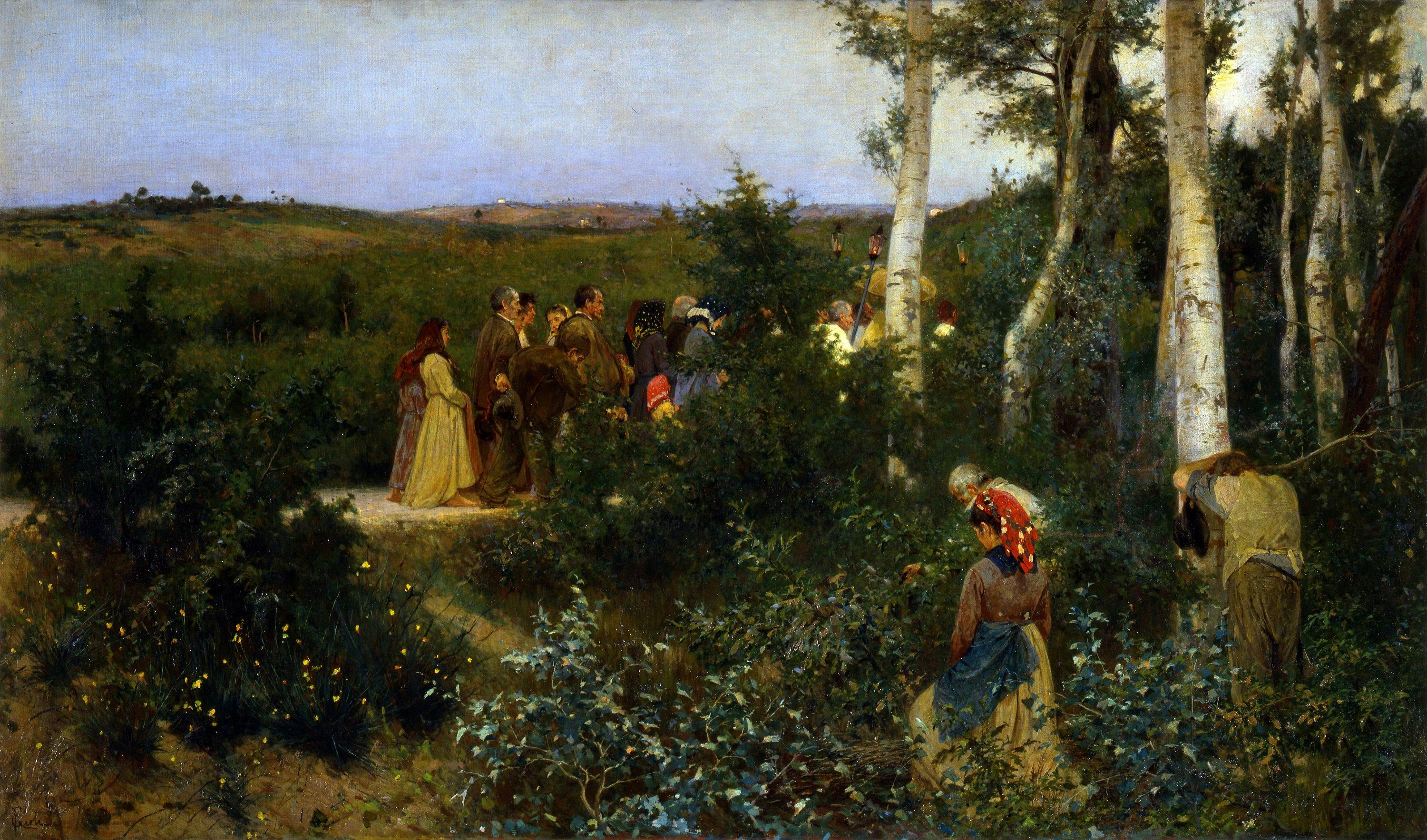The Viaticum
Francesco Gioli (San Frediano a Settimo, Pisa 1846 – Florence 1922)
The canvas, presented at the International Exposition of Paris in 1878, won the gold medal and was showered with praise, in particular by French artist, Edgar Degas. In addition, art critic Diego Martelli described it by stating that it displayed “a very honest kind of research, the type that sets the Florentine school on a rare level of distinction”. Francesco Gioli’s work was influenced by his familiarity with the art of the landscape painters of the Barbizon School, who worked en plein air, active in the decades around the mid-1800s. Evidence of this is visible in the accurate depiction of the natural elements that frame the path along which the procession is moving. Although the perspective is that of an outsider looking in, the scene is in any case imbued with a melancholy choral quality, also expressed by the country folk praying at the side of the path. The Viaticum was a traditional procession that accompanied priests on their way to deliver the last rites to the sick. This painting describes a choral vision of that procession, a kind of last farewell from the rural community.
